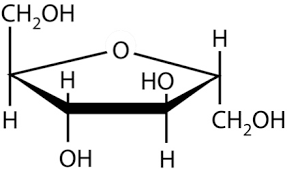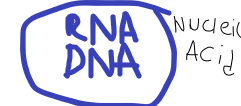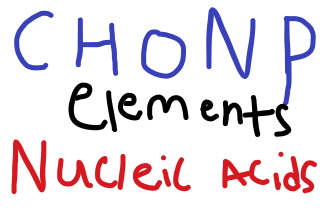Macro Molecules!!!
1/19
Earn XP
Name | Mastery | Learn | Test | Matching | Spaced |
|---|
No study sessions yet.
20 Terms
The following are everyday examples of proteins.
Hair, yogurt, nails and meat
Amino Acids contain the most of
Peptides!
Which sugar makes up RNA?
Ribose!
What is the function of proteins?
CATALYZING chemical reactions and cell structure
Monomers of Nucleic Acids are
Phosphate group, Nitroggenous Bases, and a Sugar(PNS)
What are everyday example(s) of lipids?
Oil and Waxes.

Which Macromolecule is shown by the image?
Carbohydrate! You already knew that :)
The monomers of carbohydrates?
Monosaccharides! (can be glucose, fructose,or galactose. Its a sugar)
How does the function of nucleic acids work?
By storing genetic information and instructions for protein synthesis
(NUCLEIC ACIDS ARE STORAGE UNITS THAT HOLD GENES AND INSTRUCTIONS FOR PROTEIN CREATION)
Which of the following are everyday examples of carbohydrates?
Fruit, Candy, donuts, and pasta( CARBS, sugars and starches)
DNA contains which of the following nitrogenous bases?
DNA= Adenine, Thymine, Cytosine, and Guanine (ATCG=TAGC)
RNA = (UTGC = ATCG)

Which of the following are everyday examples of nucleic acids?
DNA and RNA (genetic material) KEEP GOING YOU GOT IT!!
Carbohydrates contain these elements!
carbon, hydrogen, and oxygen in a 1:2:1 ratio.
They are a major source of energy for the body!
Lipids contain the following elements:
carbon, hydrogen, and oxygen!
A common example for Carbohydrates are
FAST ENERGY ZOOOOM
The following are monomers of lipids
fatty acids(chains) and glycerol.
examples of the FUNCTIONS of lipids
energy storage, insulation, and cellular structure.
Monomers of proteins are
AMINO ACIDS
Nucleic Acids contain the following elements
Carbon, Hydrogen, Oxygen, Nitrogen, and phosphorus
(CHONP!!!)

YOU DID A GOOD JOB KEEP STUDYING!